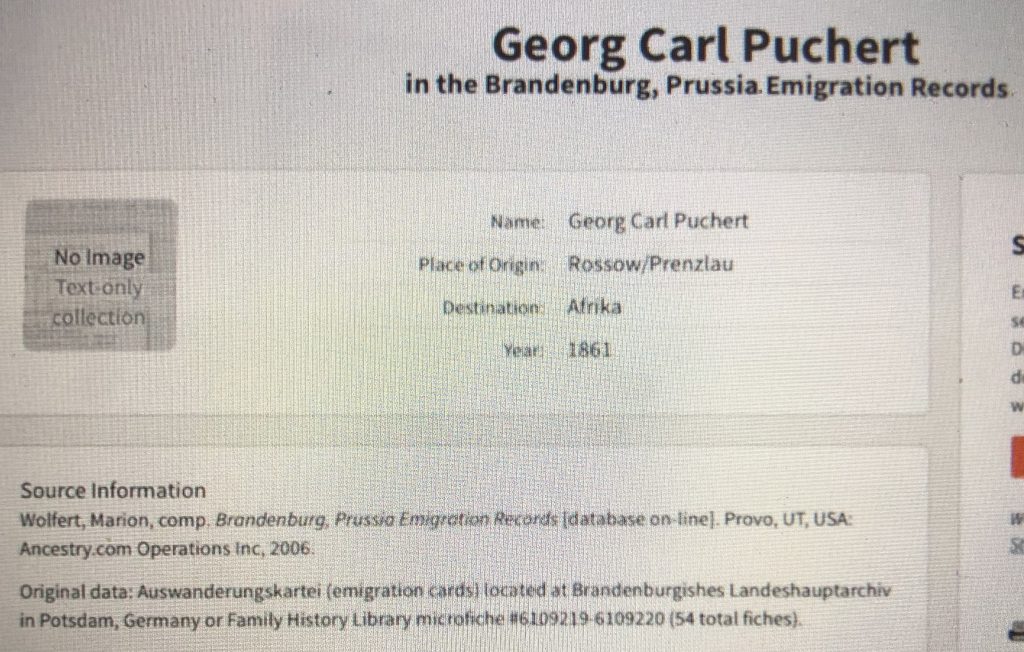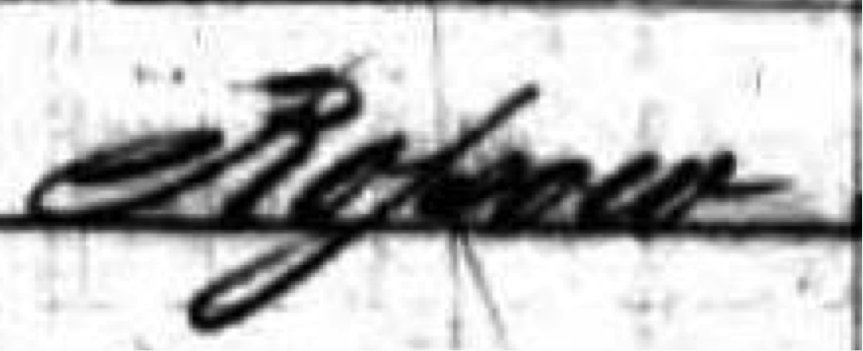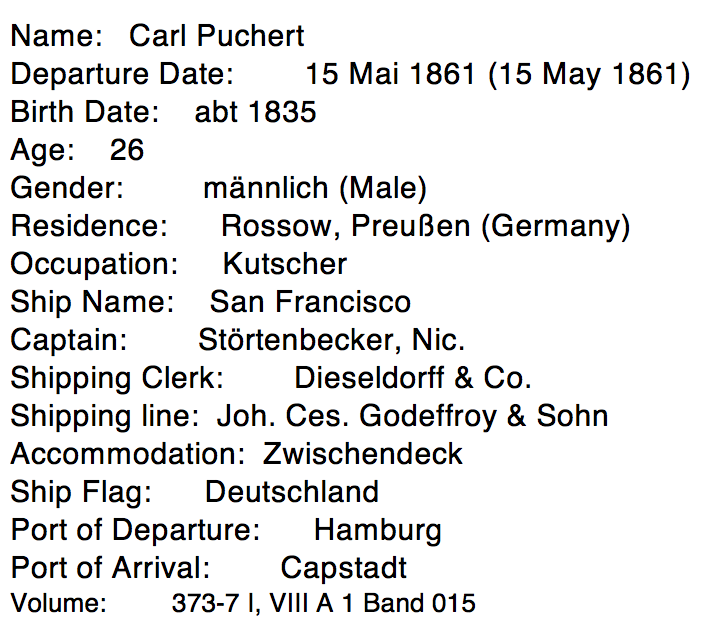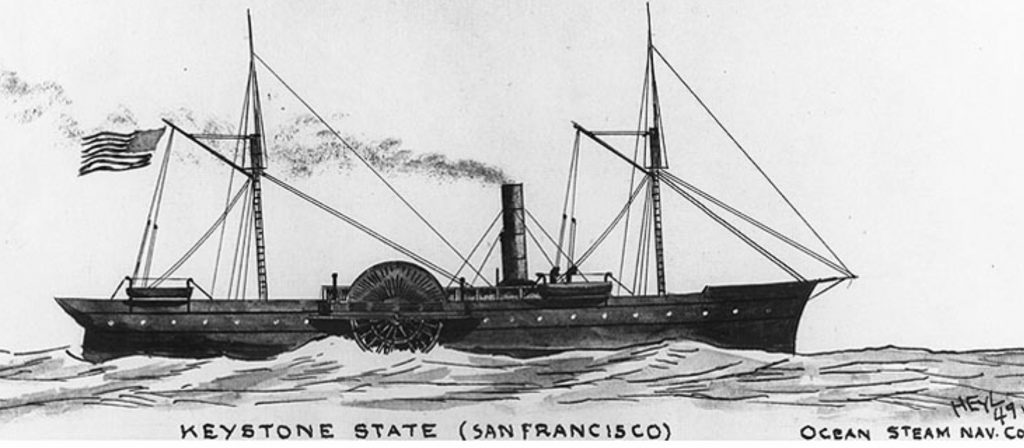Who was Wilhelmine?





Despite extensive searches, the origins of Marie Wilhelmine remain a mystery. There are no birth records for a Marie Wilhelmine Werbelow born on the 30th September in 1833 and some theories of her origins are discussed in the blog found at http://barkerclur.com/in-search-of-carl-and-wilhelmine/, especially 23.7.2019. Day 3.
Was she the illegitimate daughter of a Werbelow who consorted with a worker on the Werbelow or Hanseberg estates? Was she adopted by the Faulmanns after an illegitimate birth or after the death of her mother? Was Werbelow her mother’s surname and Faulmann her father’s or her adoptive parents’ surname? Or was Faulmann the surmane of her unmarried mother, who later married a Werbelow?
There are records of a Marie Louise Auguste Werbelow, the illegitimate daughter of Wilhelmine Werbelow born on the 14th December and baptised on the 22nd December 1833 at the Charite Hospital in Berlin. Wilhelmine Werbelow died three years later at age 26 in Berlin (1810-1836). She was the daughter of Johann Christian Werbelow and Caroline Sophie Nichelmann. There is also a record of a Baptism of a Wilhelmine Faulmann born 14th November and christened on the 17th November 1833. A Marie Werbelow was born in 1829 to Friedrich Wilhelm Werbelow and Marie Elizabeth Wobbermin, but she subsequently emigrated to the USA as far as I know, and died in 1896, so was not our Wilhelmine. There is much confusion about her in online family trees so more research is required to sort out the truth. Maybe DNA analyses will be helpful.
There are also several ideas about where Marie Wilhelmine Werbelow lived prior to her emigration to South Africa. Several family trees mention “1833 – Rostov, Kreis, Prenzlau, Pomerania, Prussia, Germany”. ROSSOW however is in Prenzlau, while ROSTOV is in Russia and far from the Pomerania of 1815-71. This confusion is probably a consequence of difficulty reading the old German handwriting.
What we do know is that when Carl George Puchert applied for permission to emigrate to Africa he listed her as his wife Wilhelmine Faulmann and his residence as in Rossow, Prenzlau. When Wilhelmine died her maiden name was registered as Werbelow on her death certificate.
Apparently Carl and Wilhelmine were married by Pastor Thiele in Germany on the 16th April 1861 but I have not been able to find any documentation to that effect as yet. (Puchert family tree in South Africa, Facebook)
Emigration to South Africa
When the 6 sailing ships left Germany as part of the Government aided immigration of agriculturalists from Prussia into British Kafraria in 1858-9, they had on board more than the 1600 statute adults that had been agreed upon. There were actually at least 200 additional families that were sent to South Africa on the responsibility of Messrs Godeffroy and Son. Upon arrival in Cape Town farmers and merchants went aboard the ships (especially the Wandrahm and Wilhelmsburg) and chose labourers to work for them on their farms and vineyards, or as shepherds, resulting in the placement of an additional 150 families. The rest went on to British Kafraria, being bound to pay their passage money to William Berg. These ‘Cape’ Germans gave full satisfaction, proving to be “a very contented, obedient and industrious class of people and in every respect the very best immigrants for agricultural and stock-breeding purposes ever introduced into” the colony. More were requested, as not all the immigrants from the British Isles that arrived as part of the Government’s assisted immigration program of 1858-62, were of the desired type. The farmers requested immigrants from Germany, Switzerland and France and were especially interested in those who had a knowledge of viticulture.
The emigrations during the period 1860-62 (when Wilhelmine Werbelow came to South Africa), were private arrangements where the emigrants bound themselves to serve their new masters for a set period of time, usually two years, and for a set wage. Once this time was up, and once their passage had been paid, they were then free to do as they pleased. According to Pastor Ludwig, “the majority of the Germans were intent on procuring their freedom and independence” and endured untold hardships to do so. After completing their contracts many went on to manage their own farms in the Cape and merged into the Afrikaans-speaking population. (XIX Subsidiary Immigration in “Part III The German emigrants of 1858-9 and 1859-62″, in “For men must work’ by E.L.G. Schnell)
In 1861 Marie Wilhelmine Werbelow and her husband Carl Georg Puchert (1834-1914) (a coachman), travelled to Table Bay, Cape Town, South Africa from Hamburg, Germany. This meant that they were part of the private emigrations that occurred between 1860 and 1862. Possibly that is how a coachman managed to emigrate, as he would have been excluded from the earlier Government assisted program of emigration to British Kafraria on the basis of his profession. Wilhelmine and Carl travelled on the San Francisco steamer leaving Hamburg on the 15th or 18th May 1961 and arrived in Cape Town on the 23rd July 1861. This meant that their voyage was much shorter than the three months it took Louise Wilhelmine Flieth and Johann Michael Clur to arrive in East London traveling on sailing ships in 1859 an 1857. Carl and Wilhelmine were among 295 immigrants on that ship and travelled third class. (Appendix XIV Subsidiary Immigration of 1859-62 in “Part III The German emigrants of 1858-9 and 1859-62″, in “For men must work’ by E.L.G. Schnell)


Apparently Wilhelmine and Carl Goerg worked for a doctor in Cape Town as Groom and Cook initially and during that period they had 3 children. In 1863 they came to East London and bought a farm in Balaise, King Williams Town and had a further 4 children while living there.
Of note there were also two other Faulmann families that sailed from Germany to Cape Town on the San Francisco with Carl and Wilhelmine. This raises the question as to whether these Faulmanns were blood relatives or adoptive family of Marie Wilhelmine.
Carl Georg Puchert and Marie Wilhelmine Werbelow’s 7 children:
- Carl Wilhelm Puchert, married Ottille Zastrow
- Louise Caroline Puchert, married Carl Friedrich Clur (1st August 1861 – 1913 )
- George Friedrich Puchert, married Emilie Frederike Krause
- Franz August Puchert, married Auguste Josephine Elizabeth Boy
- Bertha Maria Puchert, married Carl Theodor Rusteburg
- Karl Christian Puchert, married Johanna Maria Kietzmann
- Ernestine Puchert, married Hugo Friedrich Bartel
